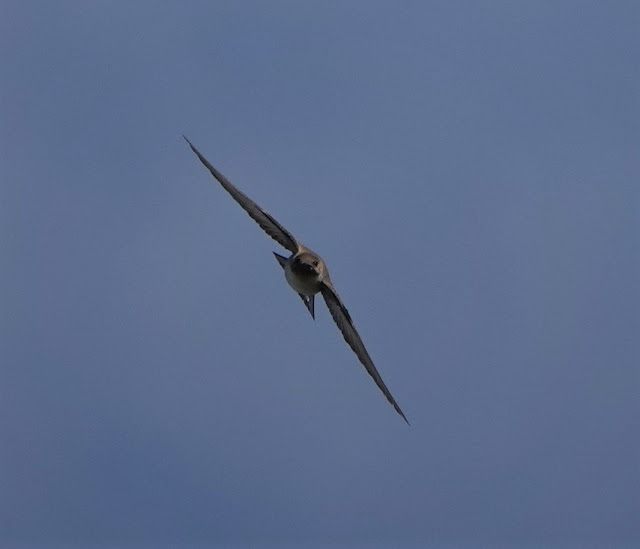Lockdown Birding Part 5
 |
| Crag Martin (Martin Kelsey) |
Despite a chunky structure, their stiff wings and dark plumage can make Crag Martins appear almost swift-like when seen flying at certain angles. Their name indicates a preference for rocky areas and across Extremadura they can be easily encountered all-year round beside cliffs and gorges. In winter, flocks numbering several hundred can gather on the massive rockface of Peña Falcón in the Monfragüe National Park, especially when warmed by the afternoon sun. Here they will sunbathe and hawk small insects carried on the updraughts beside the cliff. Their presence in the middle of winter is witness to sufficient numbers of aerial invertebrate prey even on the shortest days.
They are also well-known denizens of human structures, like bridges. Over the last decade or so, they have increased their presence in our local town of Trujillo. The medieval granite palaces offer the same interest to Crag Martins as natural rockfaces and each of the ancient arched gateways through the old town wall boasts the mud-built cup structure of a Crag Martin's nest. In the town too they are gregarious at winter roost, often choosing church porches. Although every photo I have included in the Lockdown Birding series is taken during the lockdown period at home, I must make the exception by including this one of Crag Martins in a very ecclesiastical setting in Trujillo, which I took a few years ago.
 |
| Crag Martins in curch prtch, Trujillo (Martin Kelsey) |
Our little village of Pago de San Clemente has neither crags nor bridges nor ancient buildings. But we do have Crag Martins. I have yet to work out exactly where they are nesting (and under lockdown rules I am not allowed to wander slowly around the village), but it must be in one of the semi-derelict buildings in the centre. I have seen Crag Martins for several years now around the village. What has been delightful is seeing them on all but two of the lockdown days so far, sharing the sky above our balcony with Barn Swallows, Red-rumped Swallows and sometimes House Martins as well.
Male House Sparrows are busy nest-building and increasingly getting into tetchy squabbles with neighbouring males. They are quite obvious of me as I stand on the balcony. Sometimes, however, they appear to be able to switch their testosterone pump off and downward they swoop to feed quitetly and gently together on the drive, often with a Spanish Sparrows amongst them.
 |
| House Sparrows with Spanish Sparrow (Martin Kelsey) |



Comments
We are really enjoying your posts, keep up the good work. Under the current restrictions we are allowed to go out for exercise once a day. Our walk is about 3 miles long, running through farmland, a golf course and village paths.
Over the last week we have enjoyed many birds singing including Chiffchaffs, Blackcaps 3, Yellowhammer 2 pairs, Song Thrush 2, Dunnocks and Wrens amongst others. Green Woodpeckers calling and Great Spotted Woodpeckers drumming daily now. Common Buzzard, Little Egret, Grey Heron, Canada Goose 2 pairs and flocks of Redwing are often seen. A flock of 8 Lesser Black Backed Gull in a field were more unusual.
Best wishes Mark and Pam